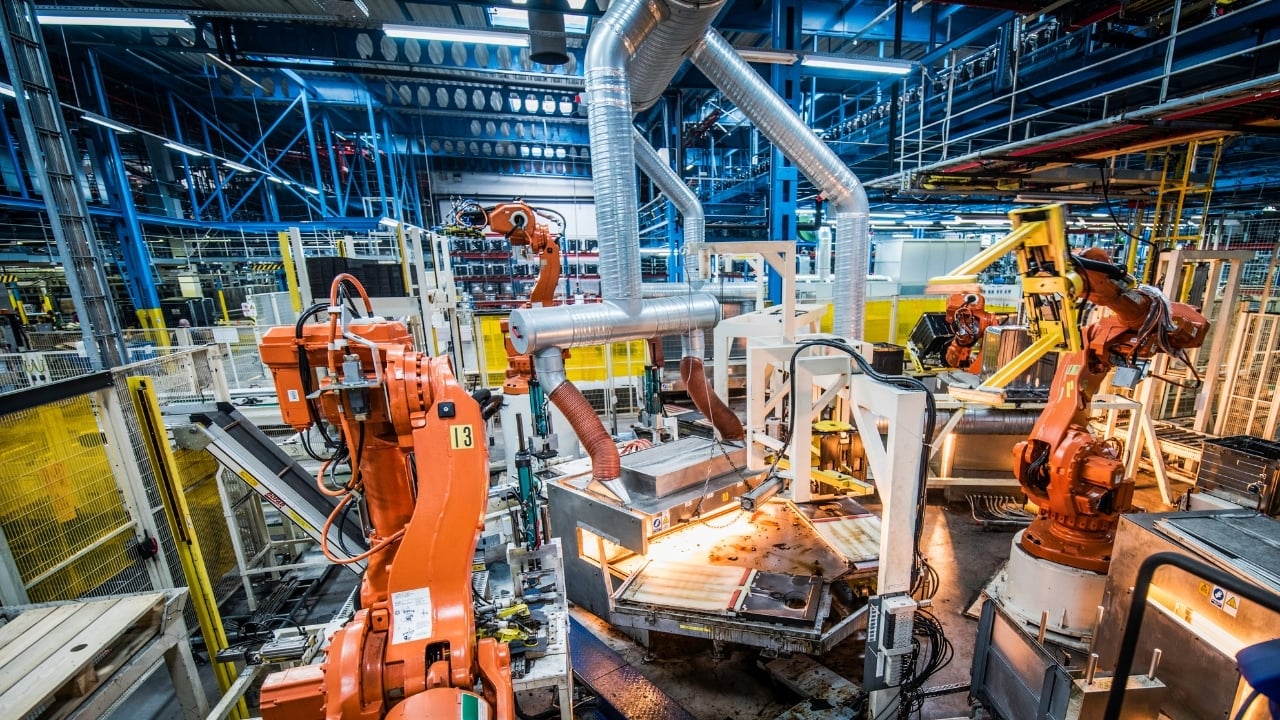While the establishment of industrial processes to manufacture large scale industry made steel a viable material for construction. With time and the innovation that advancing technology brings, this generation is set to move the needle much further along in the steel industry.
Currently, all the processes that are essentially part of the steel industry are carried out, managed, and designed entirely using human labor. This poses a limit to the number of hours spent and also opens up the margin of error due to human intervention. The field of robotics continues to be one of the most popular fields of modern innovation with studies and research underway to allow the use of robotics in everyday life.
We have already seen the tremendous potential this could have in other industries such as e-commerce, shipping, handling, etc.,. While the concept is yet to be accepted in mainstream construction, it is gaining momentum with each breakthrough that is made in the field.
The computer-based computation and design in the industry offers never-before-imagined features to be used by the masses including detailing using advanced software with the ability to understand building design and connections and simultaneously compute the effect of changing any of the members or connections associated with the design. This advancements in turn led to the fine-tuning in detailing and fabrication with less room for human error. Reducing the margin of error is especially essential in industries such as construction, where even a small error could cost millions and worst-case scenarios cause damage to assets, and even human life in certain cases.
Various regencies across the world continuously report the increase in urbanization each year as millions of people enter the “middle class” society (which essentially controls the bulk of the spending capital in society). This in turn means that new housing, infrastructure, and systems need to be constantly updated to keep up with this increasing demand. Additional buildings within built-up areas is a requirement but are not sufficient to meet the needs of the growing demographic. Cities will need to be expanded and an increase in the utilization of skilled labor should help to deal with the situation.
Concept – Automation
The purpose of introducing automation in the construction industry is the same as when industrialization first saw a boom – to make the process of manufacturing, fabricating, transportation, and storage more efficient and to simplify and streamline the entire process to ensure a reduction in costs and an increase in the rate of production of steel.
Due to the increasing shortage in skilled labor (this could be due to a variety of factors including diversification into new and innovative fields that technology has opened up), demand has sky-rocketed and resources have been depleted requiring a push in the direction of automation to improve performance and thereby the renewed interest in using robots in construction.
Robots used in construction are not jazzed-up versions we see on the television, rather they are simple mechanical systems that are operated and controlled by a diverse range of technologies. The use of automation in the steel industry will result in increased performance enhancement off-site allowing workers on-site to simply assemble the steel (reducing the time, effort, and money spent and the wastage of material). Steel members and parts can be pre-cut, pre-drilled, punched, and even labeled to create a well-organized and simplified system.
Automated Processes
Currently, all the automation processes that have started to be implemented in companies across the world are in the area of prefabrication. Standardized components are the easiest to produce using this method. The systems are designed simply but usually require skilled labor to operate it, thereby increasing overall costs again.
Architecture and construction-related institutes across the world have begun to research and try to implement automation in more traditional processes involved in the steel industry. Robots are essentially speaking machines that are designed with the ability to combine abstract motions to create useful mechanical movements to aid in different activities.
Some of the advancements in this industry recently has led to the innovative new environments where robots or automation can be used which includes using drones to inspect, manage stockpile, and even for documentation and analysis purpose, semi-autonomous or fully-autonomous machines used in construction site logistics, welding and other fabrication processes.
Using robots on actual construction sites is being heavily researched, while no one has been able to realize this as a reality due to various factors. However, the day when robots can be used on-site for assembly and erection is not far away, and this will allow for greater safety and is less threatening than allowing human beings to work in dangerous situations that unfortunately has led to the loss of many lives over the centuries.
Future Advancements
BIM Modeling and coordination is one of the greatest advancements that automation has provided the steel industry. This system is used from the start of the design process, right up until the structure is completed to superimpose different vendor’s models to ensure accuracy, reduce on-field delays and also prevent any mistakes before they even occur. While BIM coordination tends to save a lot of money and improve the overall quality of the project, the steel industry has been slow in embracing it as it requires a high level of dedication and puts a lot of imperative on accuracy.
Robots have been used largely in the field that requires repetitive manufacturing of the same components, which is why automation is quite popular in prefabrication. However, the future will see advancements in robotic components that can manufacture different components and sizes to churn out the primary steel required in structures.
The greatest developments will happen when machines that can use programmed intelligence to carry out tasks are introduced in both shop fabrication processes as well as on-site construction, as a majority of automation to this date involves non-intelligent machines that require human operators
With our start-of-the-art technology, talented workforce, quality service, and extensive experience, we are serving as a leading steel detailing company. We have successful track records in handling a wide range of projects in various sectors with excellence.
.



Leave Comment